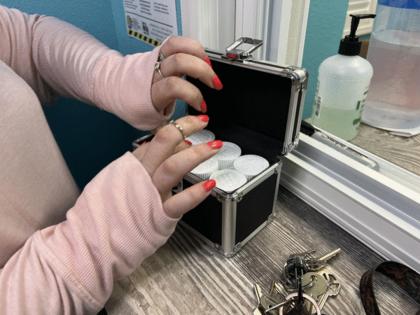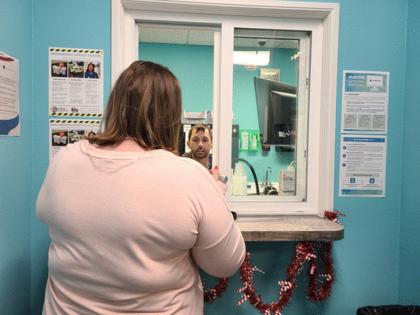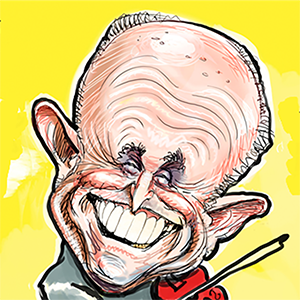For people with opioid addiction, Medicaid 'unwinding' raises the stakes
Published in Health & Fitness
CITRUS COUNTY, Fla. — It was hard enough for Stephanie to get methadone treatment when she moved to Florida from Indiana last year. The nearest clinic was almost an hour’s drive away and she couldn’t drive herself. But at least she didn’t have to worry about the cost of care.
As a parent with young children who was unable to find a job after moving, Stephanie qualified for Medicaid despite Florida’s tight eligibility rules. The state insurance program for people with low incomes or disabilities covers the methadone she needs to reduce her opioid cravings and prevent withdrawal sickness.
For nearly a decade, methadone has helped her hold down a job and take care of her kids. “Just have a normal, really normal, life,” said Stephanie, 39, who asked that her last name be withheld because her two youngest children don’t know about her history of opioid use disorder or that she has been in treatment for opioid addiction. “All the things that some people take for granted.”
So it was devastating for Stephanie when she visited her clinic in summer 2023 and learned she had been dropped from the state’s Medicaid rolls as the program worked to redetermine the eligibility of each enrollee. Suddenly, her methadone prescription cost much more than she could afford.
She panicked, afraid a disruption in care would trigger debilitating withdrawal symptoms like vomiting, fever, cramps, joint pain, and tremors. “That’s the first thing I thought,” she said. “I’m going to be so sick. How am I going to get up and take care of the kids?”
As of September, more than 25 million Americans — including 1.9 million Floridians — had lost Medicaid coverage since the expiration of federal covid-19 pandemic protections in March 2023 that had kept people continually enrolled. Among them were patients in treatment for opioid addiction, such as Stephanie, for whom a loss of coverage could be deadly.
Research shows that, when taken as prescribed, medications for opioid use disorder — such as methadone and a similar medicine, buprenorphine — can reduce dangerous drug use and cut overdose fatalities by more than half. Other studies have found the risk of overdose and death increases when treatment is interrupted.
It is unclear how many people with opioid addiction have lost coverage in the Medicaid disenrollment, known as the “unwinding.” But researchers at KFF, a health information nonprofit that includes KFF Health News, estimate that more than 1 million low-income Americans depend on the federal-state Medicaid program for lifesaving addiction care.
At Operation PAR — a nonprofit addiction treatment provider from which Stephanie and thousands of others along Florida’s Gulf Coast get care — the percentage of opioid treatment patients with Medicaid has dropped from 44 to 28 since the unwinding began last year, the organization said.
Dawn Jackson, who directs Operation PAR’s newest clinic, about an hour north of Tampa in the small Citrus County city of Inverness, said it has been a struggle trying to stretch limited grant dollars to cover the recent surge of uninsured patients.
“There’s been sleepless nights,” Jackson said. “We’re saving lives — we’re not handing out Happy Meals here.”
Methadone and buprenorphine are considered the gold standard of care for opioid addiction. The drugs work by binding to the brain’s opioid receptors to block cravings and withdrawal symptoms without making a person feel high. Treatment reduces illicit drug use and the accompanying overdose risk.
However, few Americans who could benefit from the medicines actually receive them: The latest federal data shows that in 2021 only about 1 in 5 people who needed the medicines got them. The low numbers offer a sharp contrast to the record-high drug overdose epidemic, which killed nearly 108,000 Americans in 2022 and is driven primarily by opioids.
Zachary Sartor, a family medicine doctor in Waco, Texas, who specializes in addiction treatment, described the effect of such medications as “nothing short of remarkable.”
“The evidence in the medical literature shows us that things like employment and quality of life overall increase with access to these medications, and that definitely bears out with what we see in the clinic,” Sartor said. “That benefit just seems to grow over time as people stay on medications.”
Sartor, who works at a safety net clinic, prescribes buprenorphine, and most of his patients are uninsured or on Medicaid. Some are among the 2.5 million Texans who lost coverage during the state’s unwinding, he said, causing their out-of-pocket buprenorphine costs to abruptly rise as much as fourfold.
The loss of coverage — which also cuts access to health care beyond addiction treatment — often requires patients to make risky trade-offs.
Sartor said that can mean patients having to choose between medications to treat their addiction and drugs for other medical conditions. “You start to see the cycle of patients having to ration their care,” he said.
Many people who lost their insurance in the Medicaid unwinding have since seen it reinstated. But even a brief disruption in care is serious for someone with opioid use disorder, said Maia Szalavitz, a journalist and an author who writes about addiction.
“If you want to save people’s lives and you have a lifesaving medication available, you don’t interrupt their access to health care,” Szalavitz said. “They end up in withdrawal and they end up dying.”
When Stephanie lost her Medicaid coverage last year, Operation PAR was able to subsidize her out-of-pocket methadone costs, so she paid only $30 a week. That was inexpensive enough for her to stick with treatment for the six months it took to restore her Medicaid coverage.
But the patchwork of federal and state grants that Operation PAR uses to cover uninsured patients doesn’t always meet demand, and waiting lists for subsidized methadone treatment are not uncommon, said Jackson, who directs the clinic in Citrus County.
Even before the Medicaid unwinding, about 13% of people younger than 65 in Florida were uninsured, one of the highest rates in the country, according to census data. Florida is also one of 10 states that have not expanded Medicaid for low-income adults.
Jon Essenburg, chief business officer at Operation PAR, said a recent infusion of opioid settlement money wiped out the group’s waiting lists, at least for now. But he said settlement dollars — Florida expects to receive $3.2 billion over 18 years from opioid manufacturers and distributors — are not a long-term solution to persistent coverage gaps, which is why stabler reimbursement sources like Medicaid can help.
“Turning people away over money is the last thing we want to do,” Jackson said. “But we also know that we can’t treat everybody for free.”
Stephanie is grateful she never had to go without her medicine.
“I don’t even want to think about what it would have been like if they wouldn’t have worked with me and helped me with the funding,” Stephanie said. “It would have been a very dark rabbit hole, I’m afraid.”
____
Kim Krisberg is a contributing writer for Public Health Watch and co-leads the reporting project The Holdouts . Stephanie Colombini is a reporter for WUSF’s Health News Florida project.
©2024 KFF Health News. Distributed by Tribune Content Agency, LLC.













Comments